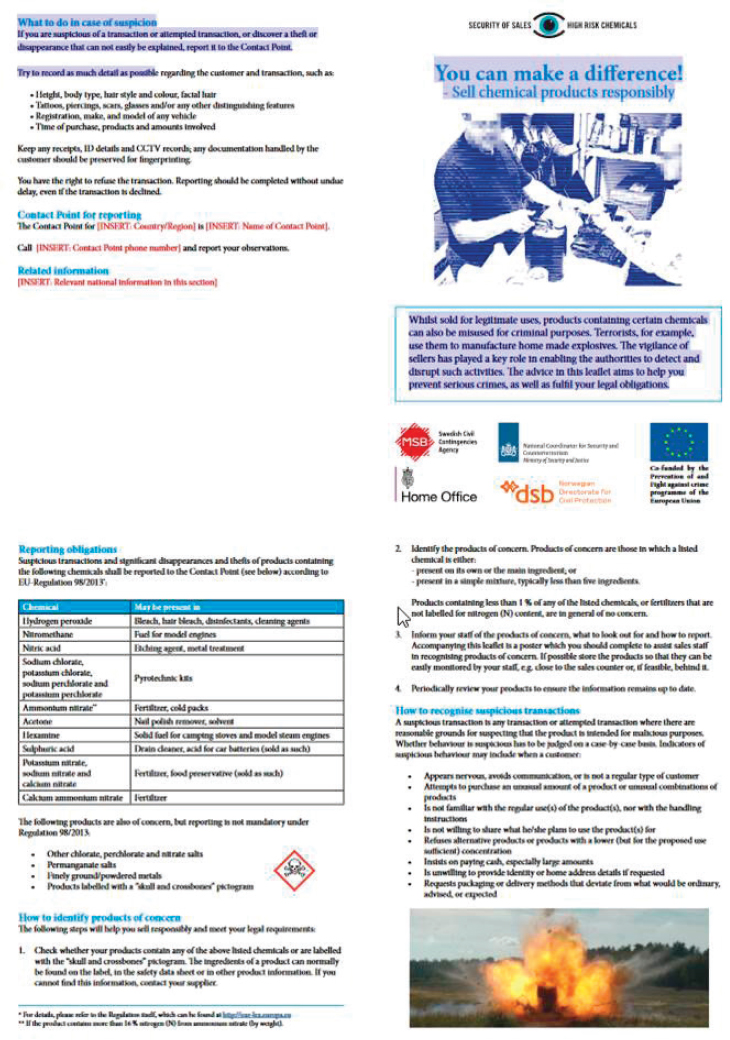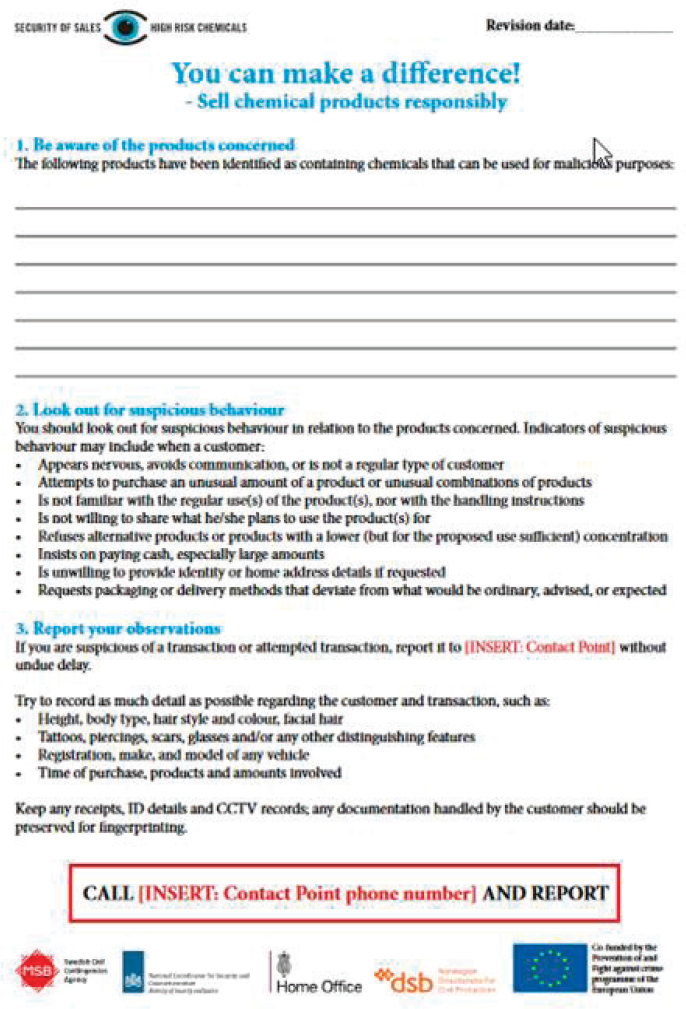Appendix F
Training Materials
The EU’s Standing Committee on Precursors (SCP) issued a guidance document that provides guidance to the authorities of EU MS and to retailers regarding the implementation of the requirements contained in the EU’s Regulation 98/2013. The SCP guidelines also offer advice on good practice to retailers.
Four partner countries developed retailer-oriented guidance materials for distribution across the EU MS through a project cofounded by the Prevention of and Fight against Crime program of the Directorate General for Migration and Home Affairs.
Additionally, a template leaflet and a template poster in various languages were developed to provide further practical guidance on how to identify suspicious transactions and on what steps to undertake in case of suspicion (see Figures F-1 and F-2).283
Lastly, the SCP developed a document for companies and individuals who sell reportable products via internet markets to members of the public. The document provides advice on marketplace sales of explosives precursors and poisons.


This page intentionally left blank.




